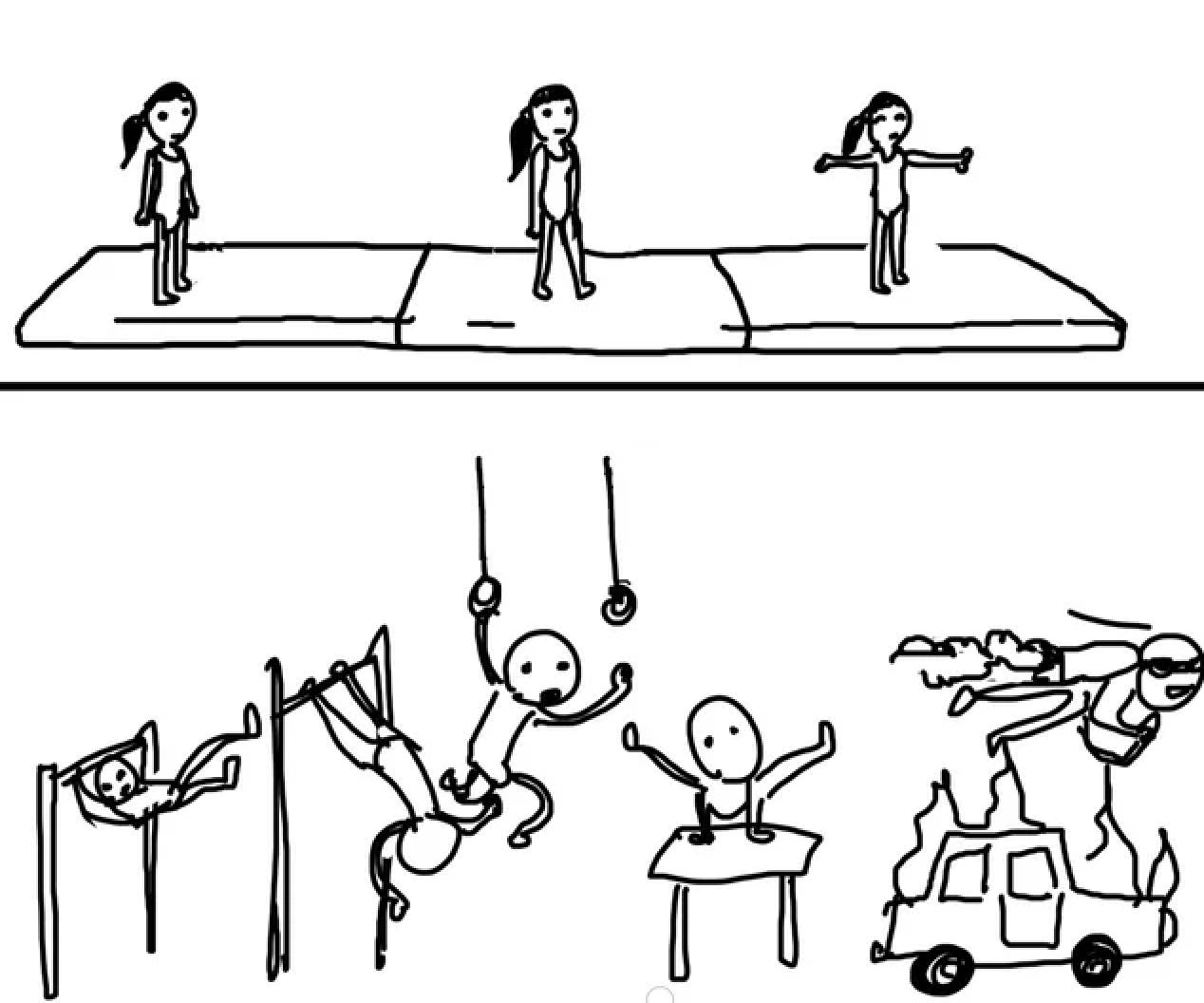I’ve unwisely decided to spend spring break participating in the thrilling, adrenaline-inducing, heart-pounding activity known as “staying indoors on my own.” To maintain some kind of grip on reality, I’m attempting to write a short blog post every day, on whatever topic I feel like. Let’s see how many I end up with.
Today’s post is about invisible requirements. Perfectionists, this one’s for you.
What Are Invisible Requirements?
When you feel the urge to do something, your brain comes up with the steps to do it. Some are sensible: you’re hungry, there’s a taco truck nearby, so you get up and go. Clean, direct, effective. Go get those tacos, dude.
Other times, your brain starts quietly adding extra steps. Maybe you should check Google Maps, just in case there’s somewhere better. Maybe you should compare prices, or think about nutritional value, or optimize for walking time, or find the Pareto frontier for all three. Suddenly, getting lunch has become a small project. You’re still hungry, and you’re still sitting down.
Invisible requirements are the imagined prerequisites your brain invents: the steps that feel necessary but aren’t. They masquerade as logic or high standards, but they’re usually just avoidance in disguise, preventing you from achieving the original goal.
A Few More Examples
For working out:
“I need to figure out the perfect exercise routine before I go to the gym.”
“I should really dial in my diet and sleep first, because that’s more important for health.” (I have literally never “dialed in” my diet and sleep in my life.)
For writing this very blog post:
“When I’m writing, I should be in a state of deep and total focus. Time to turn the music off.”
“Substack isn’t right for this post. I should restart my custom-coded website blog… oh, and I should add RSS feed functionality!”
“This concept needs to be new. I’ll do a comprehensive literature review of existing forums just to make sure they haven’t covered this.”
A real life example:
The Wintergatan guy. Have you seen that video of a a rickety wooden machine that made music out of marbles? Some of those marbles ended up on the floor, but that didn’t matter; he made an amazing music video and it was a fun project.
Next on the list: making a shiny new marble machine!
Except… this one had to perfectly keep time. And never drop any marbles. And it had to have this feature, and that feature, and…
You can see where this is going. Marble Machine X got shelved, despite the 4 years of work put into it. He’s trying again now with the Marble Machine 3, which I haven’t kept up with.
But Some Of These Are, Like, Actual Requirements Though
I’ve noticed that there’s often just one requirement: get the thing done.
The requirement for success for this blog post is that it gets published. No more and no less. That’s it.
But that’s not completely true. I want this to be a good blog post, too, and communicate my ideas clearly. There’s more to it than just getting the post published.
So how do you distinguish real requirements from invisible ones? I’m still trying to figure that out, but one idea is that there’s almost always a way around things that aren’t true requirements. For example, let’s say I publish this post with some spelling errors. Well, I can just edit things after publication. Or, let’s say I’m hesitant to go to the gym because I don’t know what to exercise. Turns out, I can ask one of the staff members there for a recommendation.
There’s almost always a workaround that you haven’t thought of before. Unless you’re doing brain surgery. In which case, ignore this post and finish med school.
Defense Techniques
Here’s a few things I’ve found helpful, though it’s by no means an exhaustive list:
Self-awareness helps a lot here, and that’s a skill you can build. Try to notice when you use the word “should” in your mental monologue—are those actual requirements or just items on the wish list?
Having friends who can call you out on this is a good thing. For example, I struggle with networking. Recently, I was talking to some friends about how I was hesitating on reaching out to a guy because I couldn’t decide on a specific ask. Then someone said that I didn’t need an ask, I can just, you know, reach out for the sake of reaching out.
Also, having friends who have done the thing you want to do is great, because they can fill you in on what the real requirements are.
List out your goal, then list out your requirements. Importantly, this should be done outside your head. On your laptop, on paper, whatever. Take a look at your list and decide what can be crossed out.
Conclusion: Motion is Not Progress
Invisible requirements feel productive. Planning feels like progress. Organizing your notes about doing the thing feels like doing the thing. But at the end of the day, you still haven’t… you know… done the thing.
So, the next time you feel stuck, ask yourself:
What are the real requirements here?
And do only those. You’ll be surprised at how fast you progress.



Reading this post after reading some of Cate Hall's work (which you recommended 😀) allowed me to make the connection that being agentic means removing these "invisible requirements"